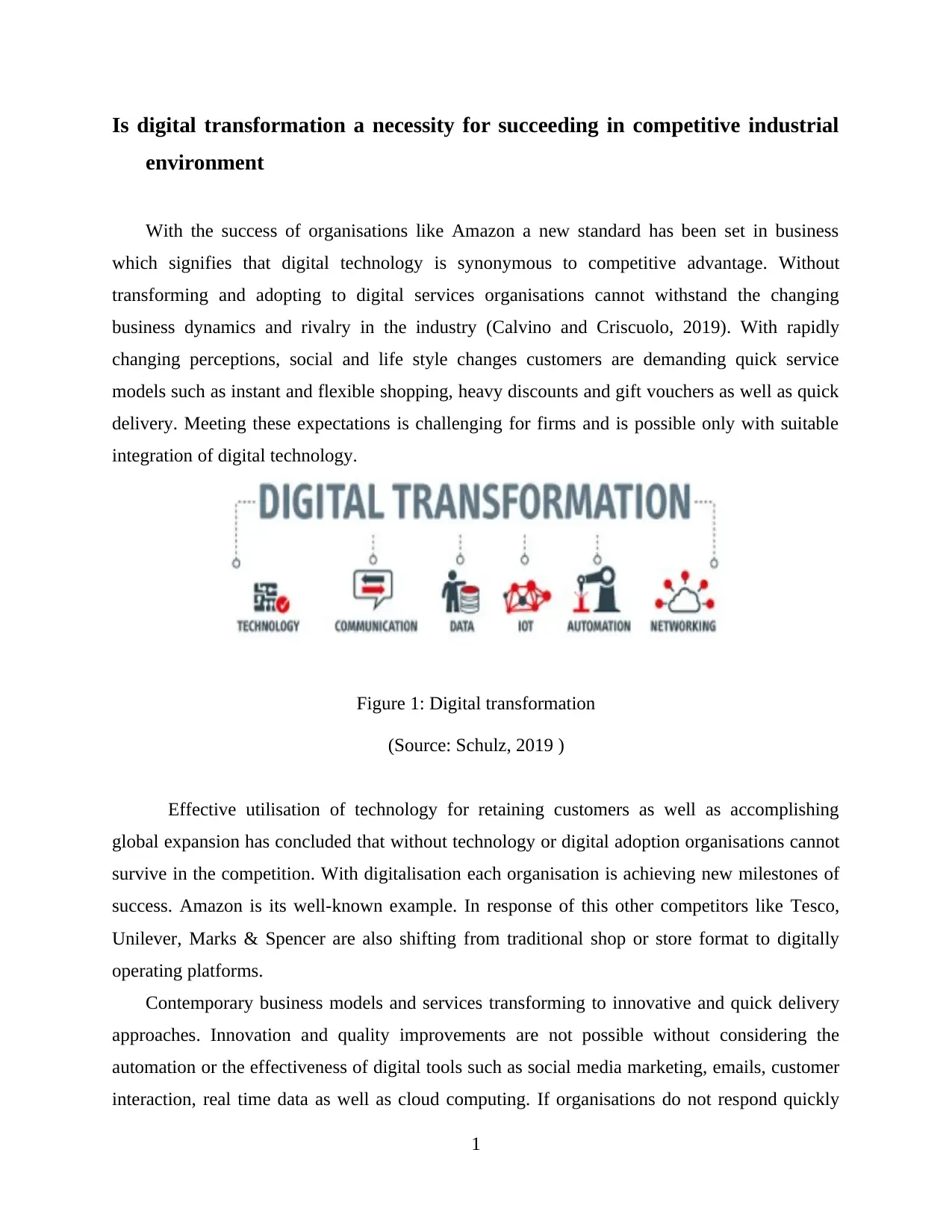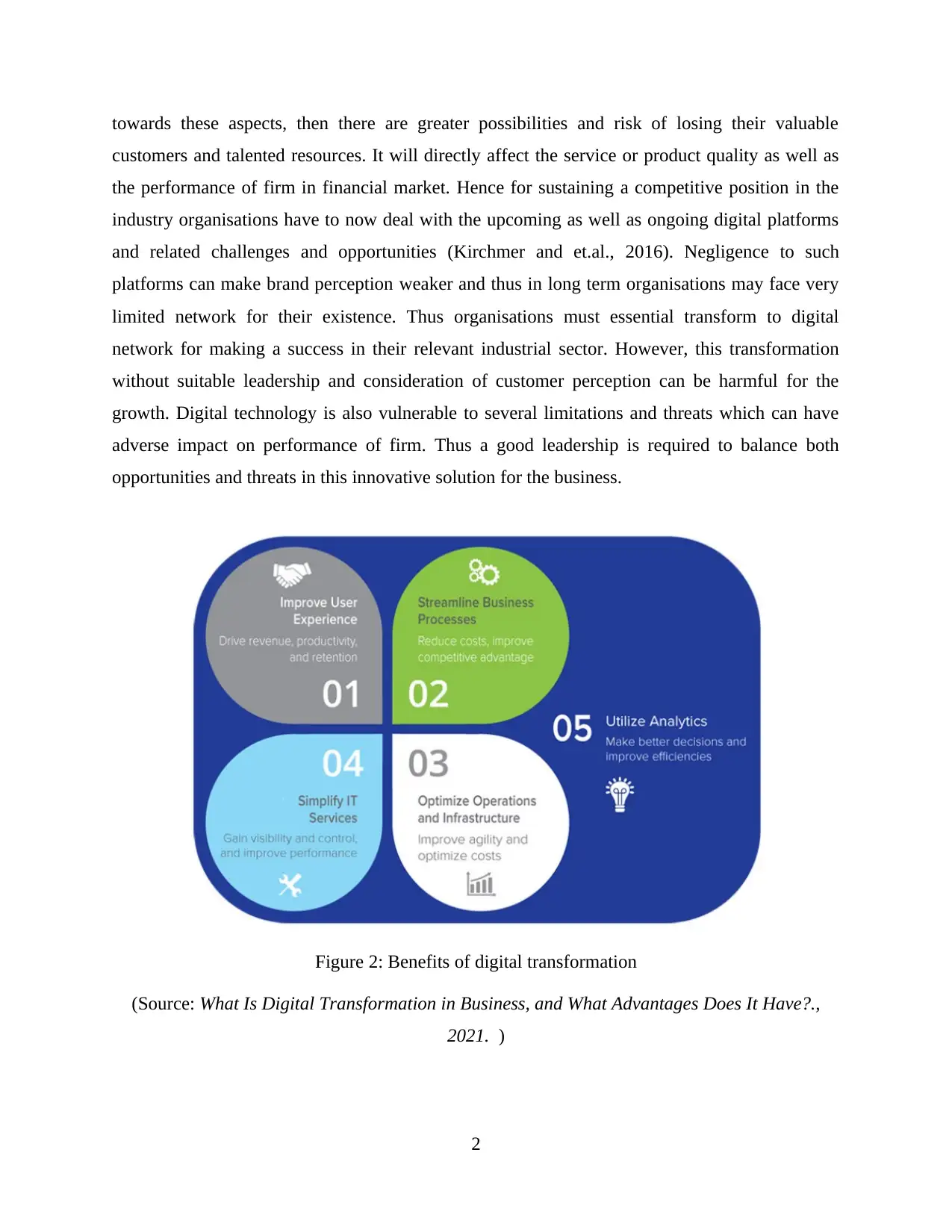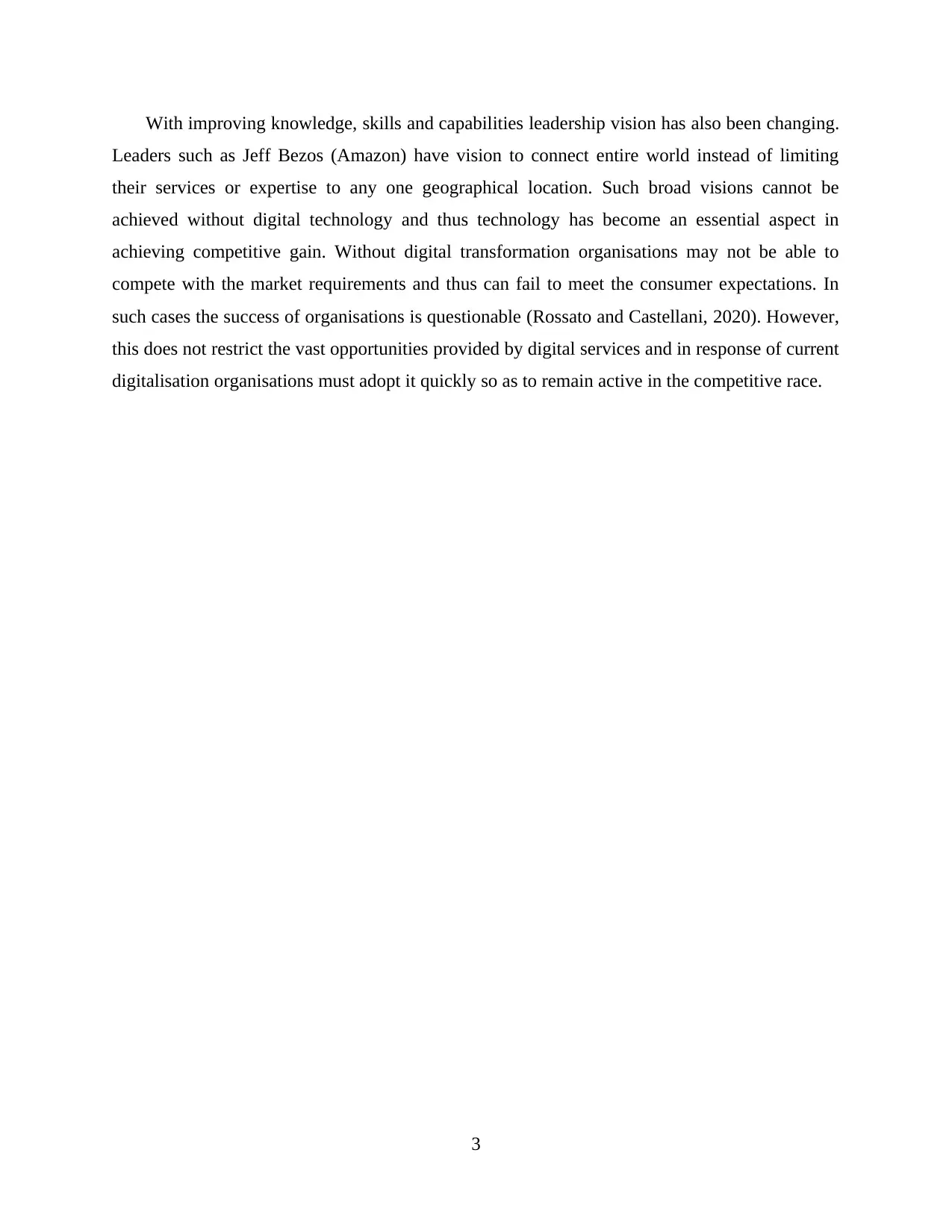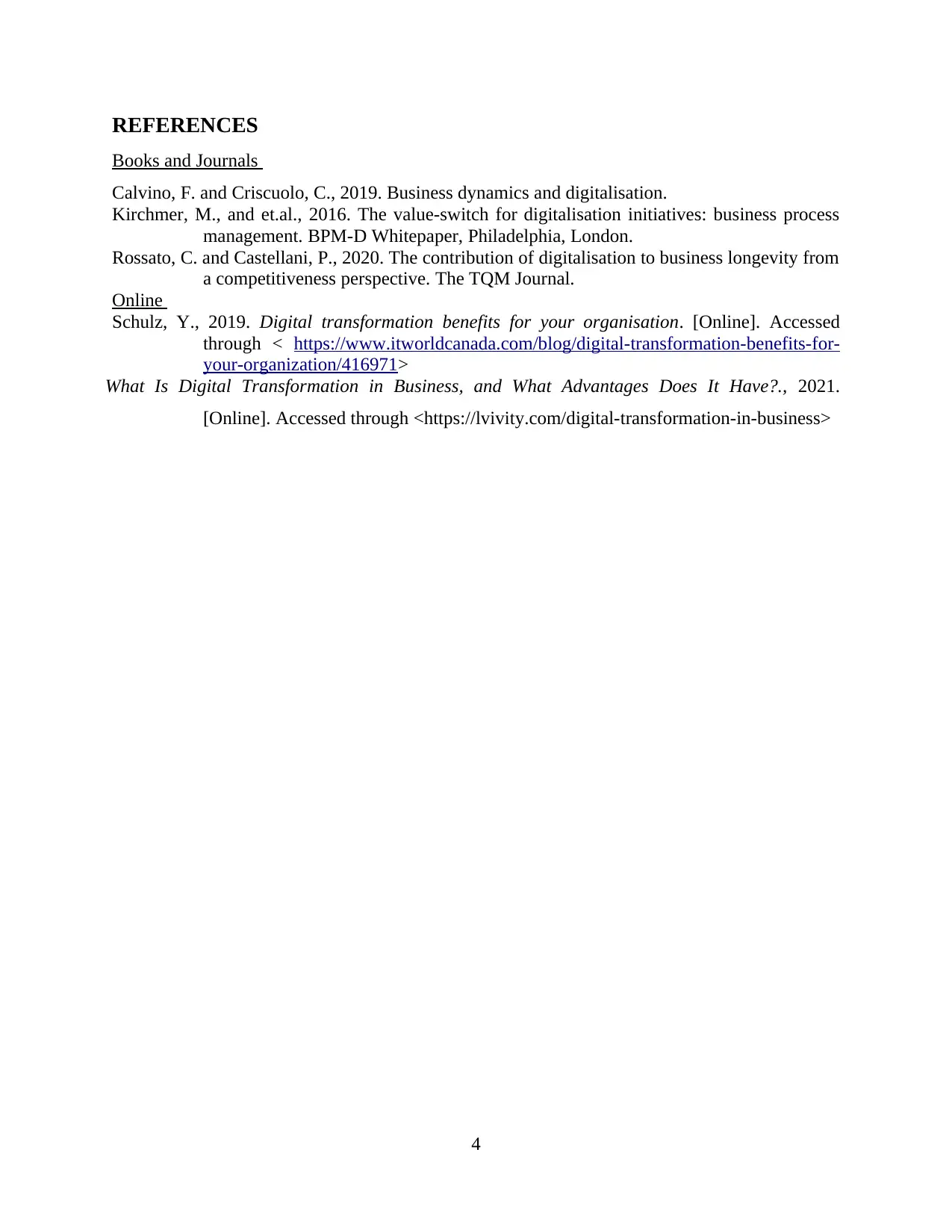The Necessity of Digital Transformation in Competitive Industries
VerifiedAdded on 2023/06/13
|4
|732
|453
Essay
AI Summary
This essay explores the critical role of digital transformation for organizations aiming to succeed in today's competitive industrial environment. It highlights how the rise of companies like Amazon has set a new standard, making digital technology synonymous with competitive advantage. The essay argues that without embracing digital services, organizations risk falling behind due to rapidly changing customer expectations and business dynamics. It emphasizes the need for integrating digital technologies to meet demands for quick service models, discounts, and fast delivery. Furthermore, the essay discusses how effective technology utilization is essential for customer retention and global expansion. It also acknowledges the limitations and threats associated with digital transformation, stressing the importance of leadership in balancing opportunities and risks. Ultimately, the essay concludes that organizations must transform to digital networks to thrive in their respective industries, while also being mindful of customer perception and potential vulnerabilities.
1 out of 4









![[object Object]](/_next/static/media/star-bottom.7253800d.svg)